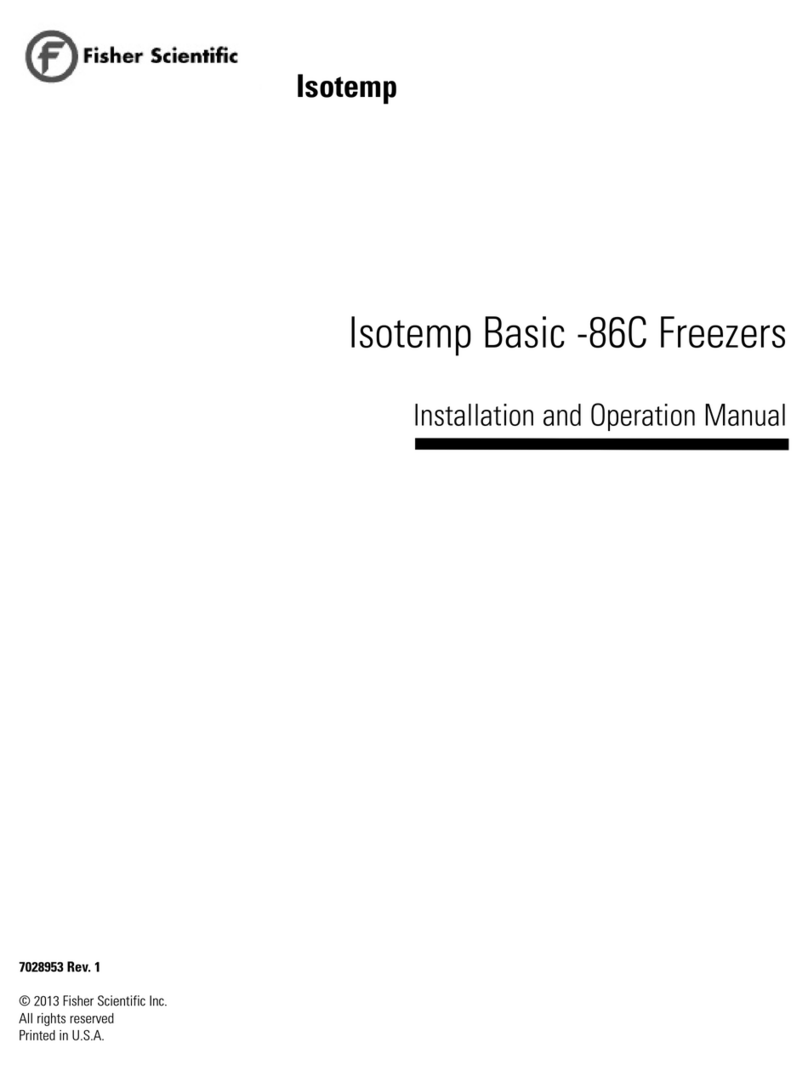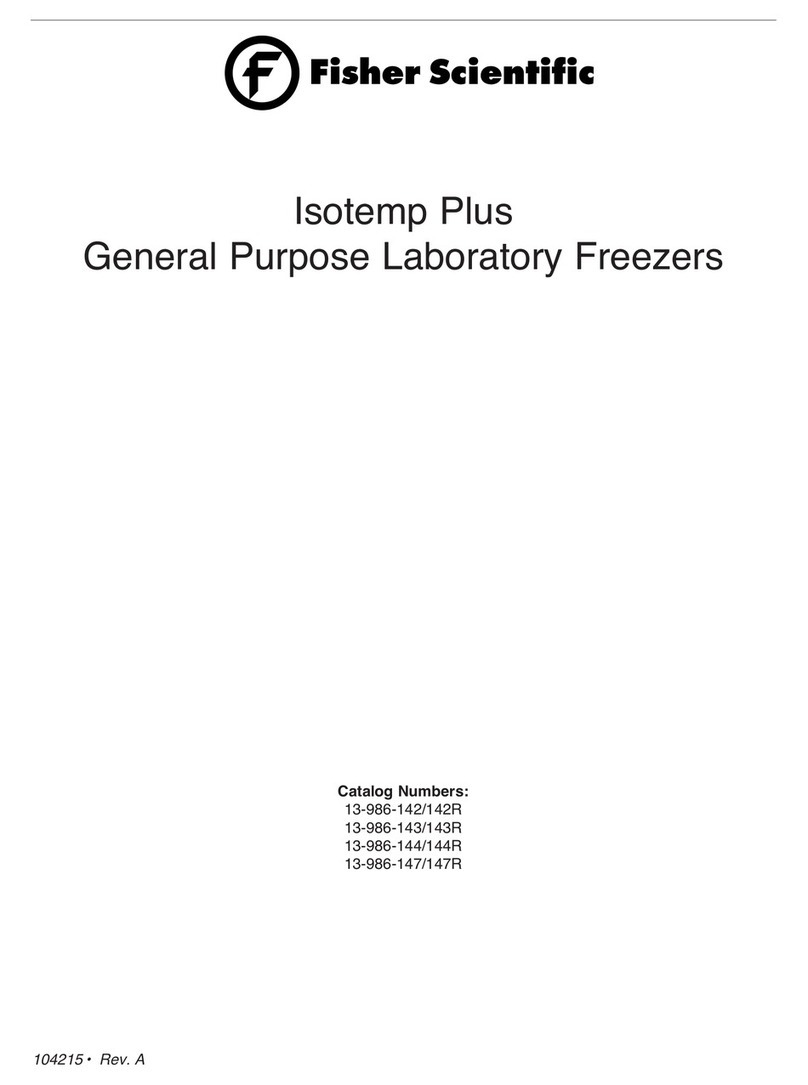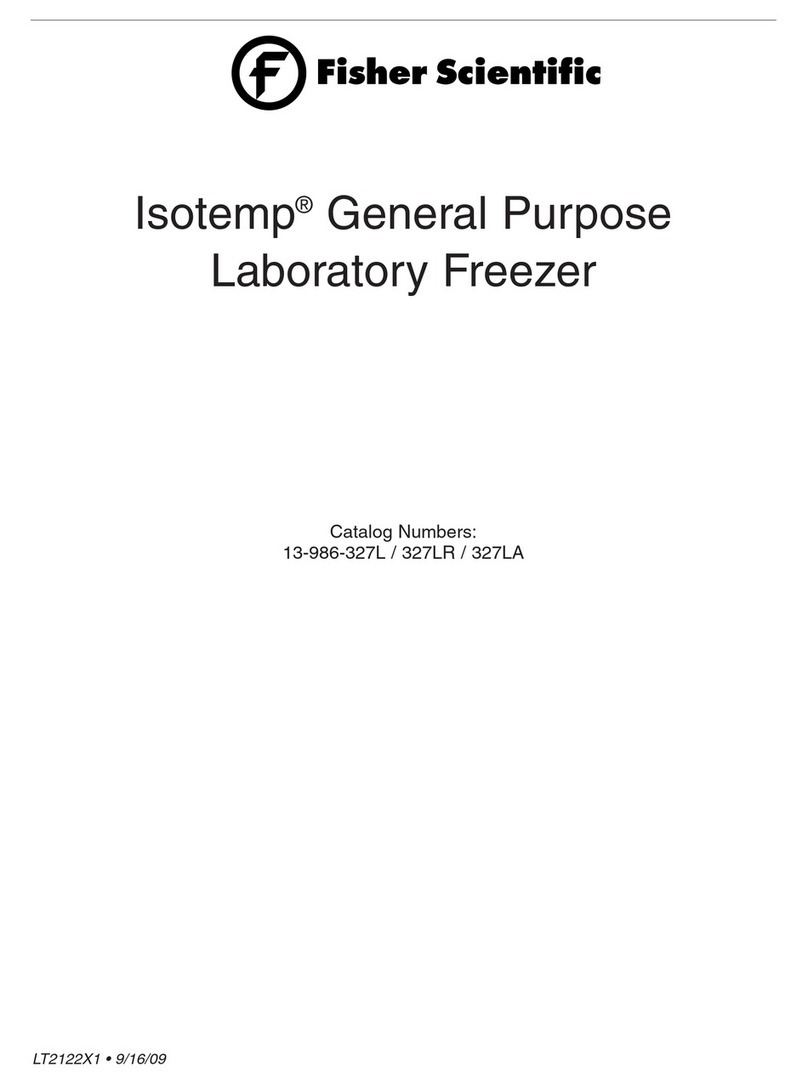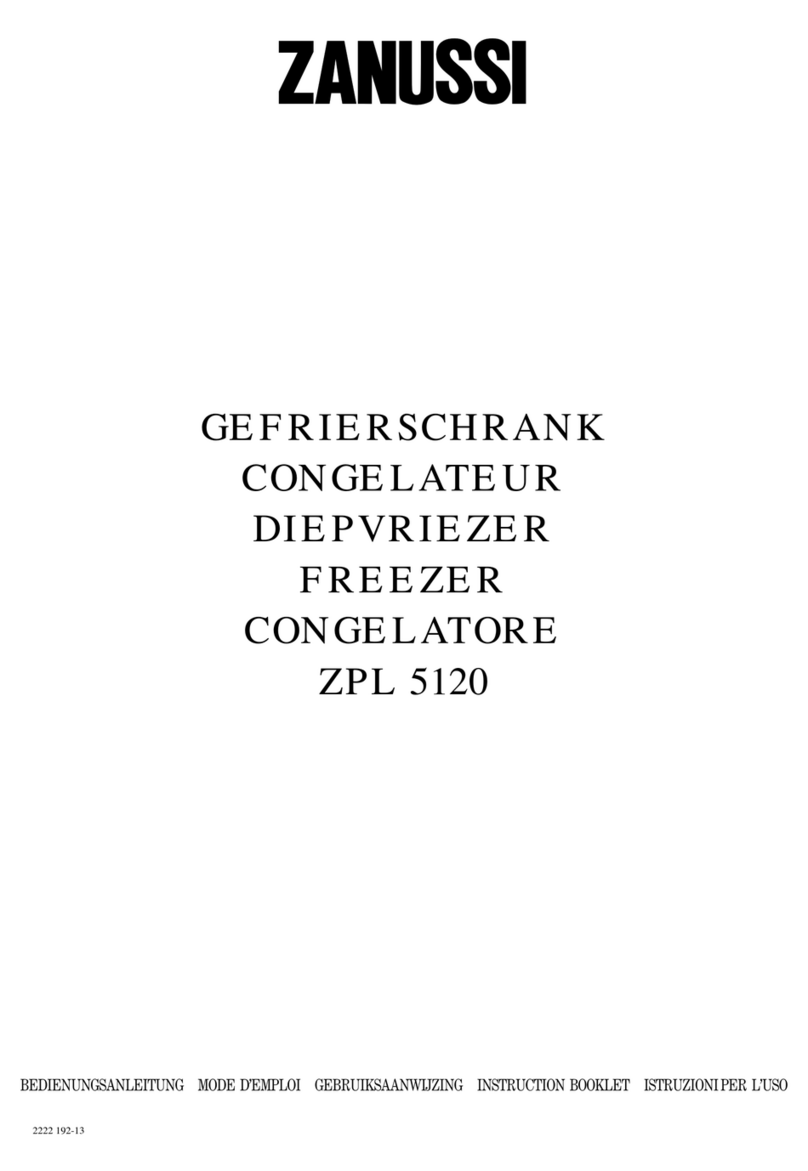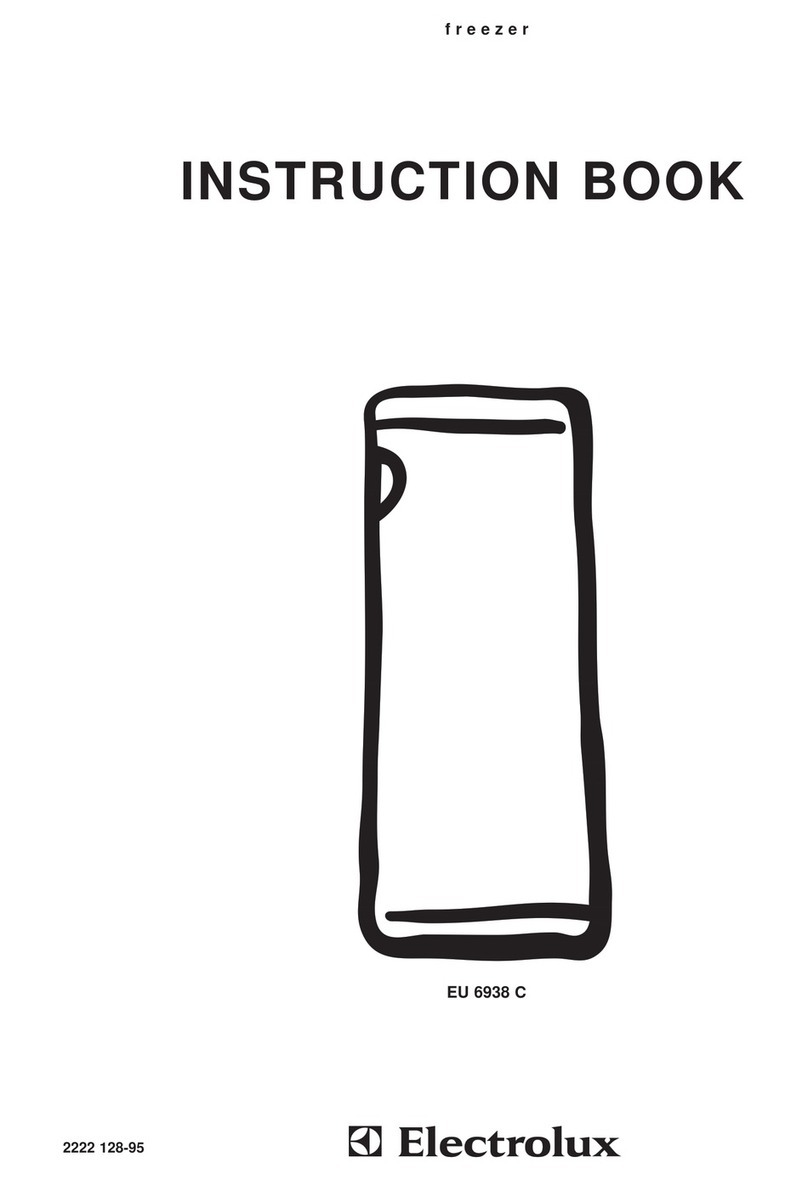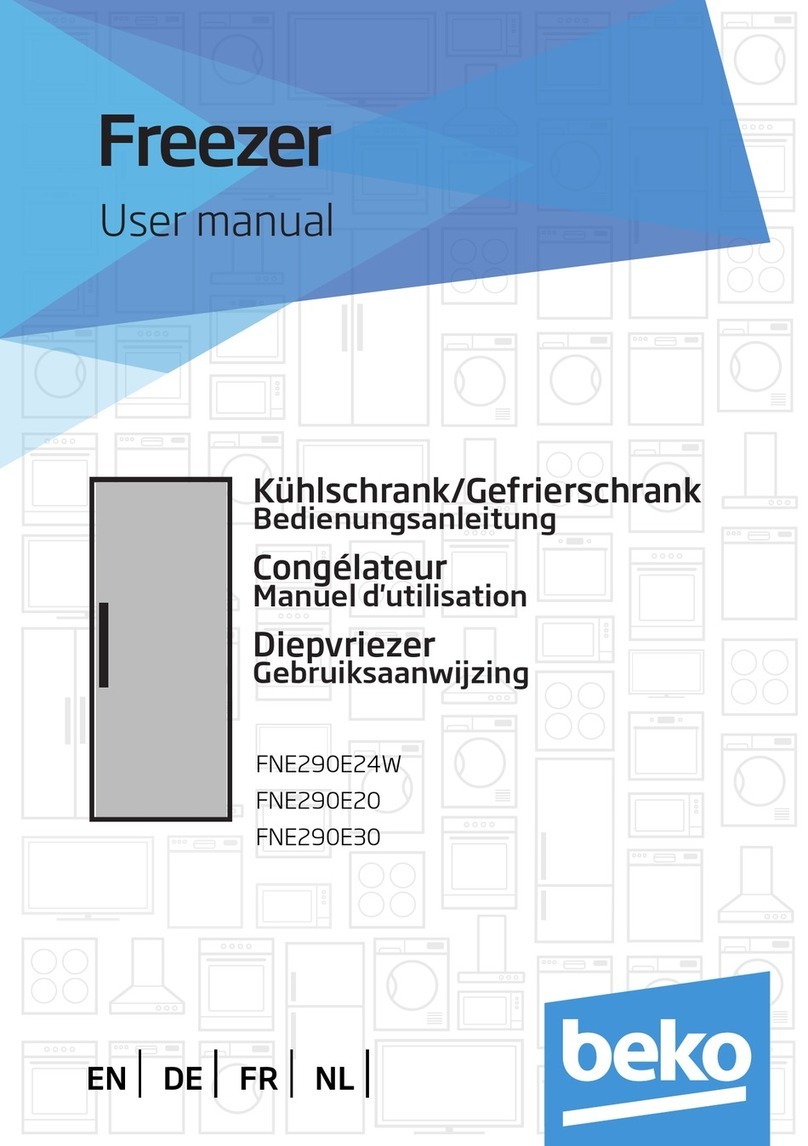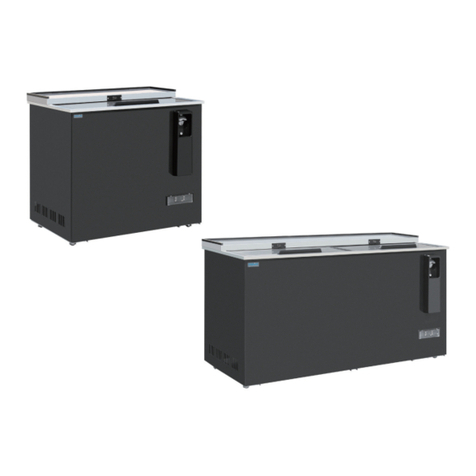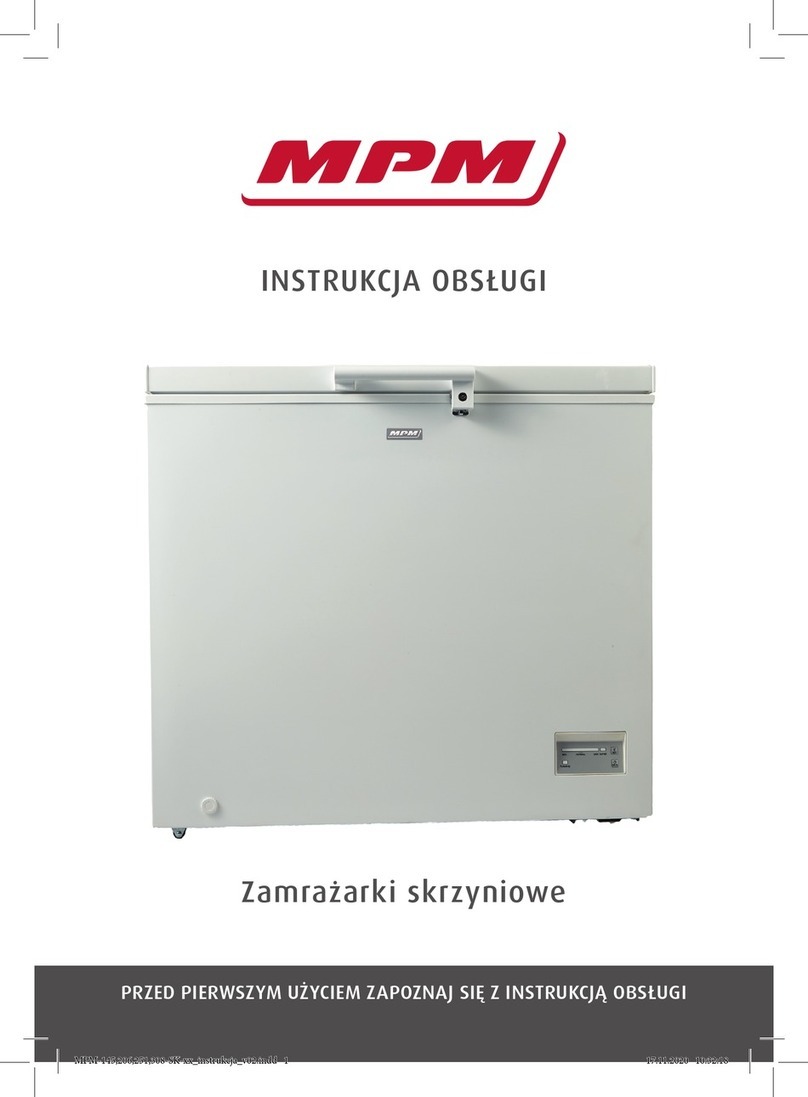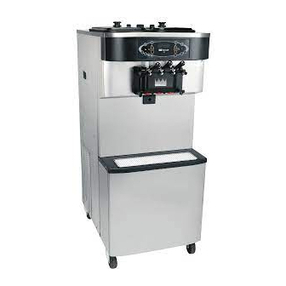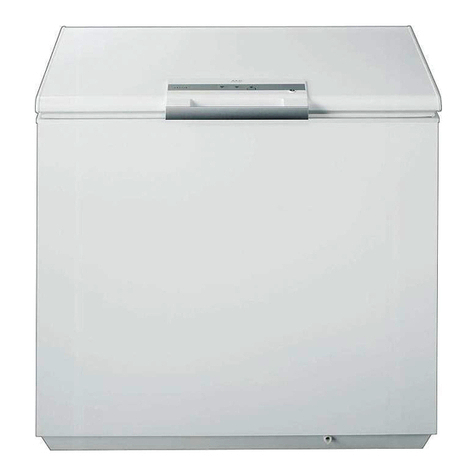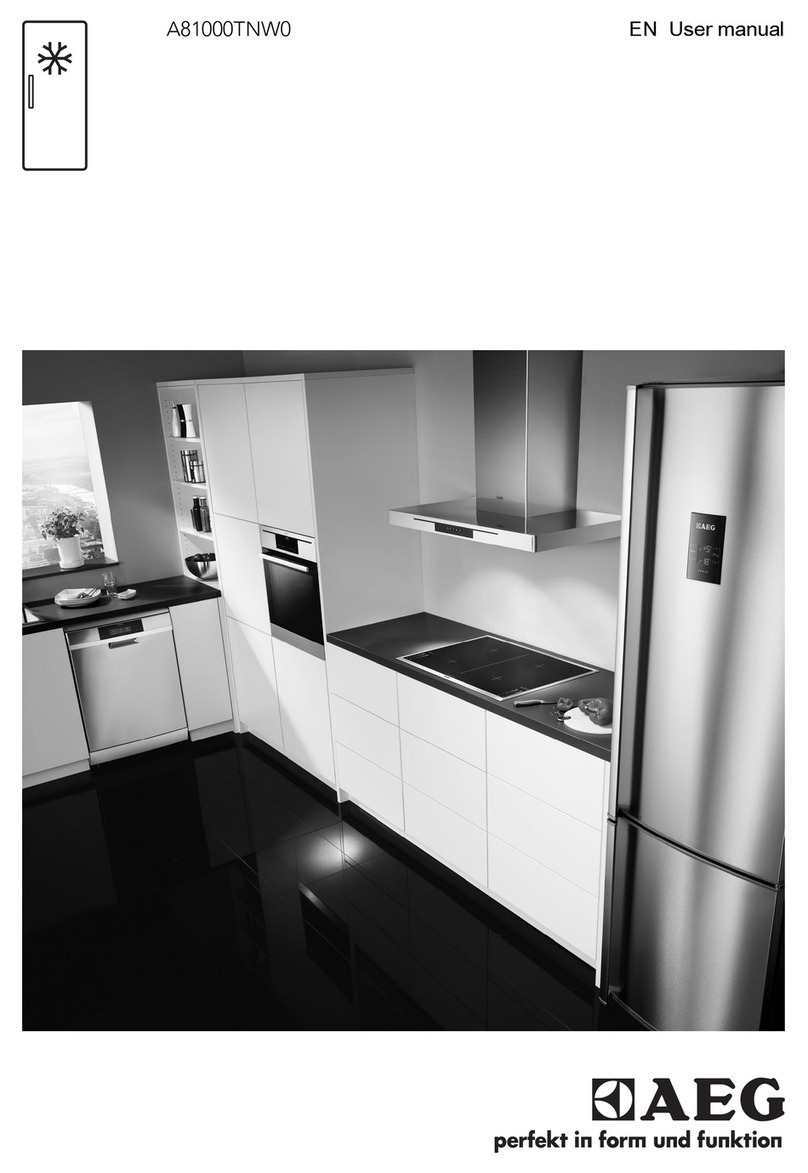
Safety Considerations | 3
EMC (where applicable)
EMC Registration is done on this equipment for professional
use only. It may cause interference when the product would
be used in home.
사용자 안내문 이 기기는 업무용 환경에서 사용할 목
적으로 적합성평가를 받은 기기로서 가정용 환경에서
사용하는 경우 전파간섭의 우려가 있습니다.
This equipment has been tested and found to comply with the
limits for a Class A digital device. Class A covers devices for
usage in all establishments other than domestic and that are
not directly connected to a low voltage power supply
network, which supplies domestic environment.
Isotemp -86°C Freezers
FCC (where applicable) Note:
This device complies with Part 15 Subpart B of the FCC
Rules. Operation is subject to the following two conditions:
(1) this device may not cause harmful interference, and (2) this
device must accept any interference received, including
interference that may cause undesired operation. Any
changes or modifications not expressly approved by the
manufacturer could void the user’s authority to operate the
equipment.
This equipment has been tested and found to comply with the
limits for a Class A digital device, pursuant to part 15 of the
FCC Rules. These limits are designed to provide reasonable
protection against harmful interference when theequipment is
operated in a commercial environment. This equipment
generates, uses, and can radiate radio frequency energy and,
if not installed and used in accordance with the instruction
manual, may cause harmful interference to radio
communications. Operation of this equipment in a residential
area is likely to cause harmful interference in which case the
user will be required to correct the interference at his own
expense.
Canadian ISED IC Notice
This ISM digital apparatus complies with Canadian ICES-001,
Class A.
Cet appareil ISM est conforme à la norme NMB-001 du
Canada, Classe A.
This unit is not intended for use in classified hazardous
locations, nor to be used for the storage of flammable
inventory.
Symbols Glossary
DANGER: Risk of fire or explosion. Flammable
refrigerant used. To be repaired only by trained
service personnel. Do not puncture refrigerant
tubing.
AVERTISSEMENT - Risque d'incendie ou
d'explosion. Réfrigérant inflammable utilisé. Pour
être réparé uniquement par du personnel de
service qualifié, Ne pas percer le tuyau de
réfrigérant.
CAUTION: This unit is intended for use in
laboratories in commercial, industrial or
institutional occupancies as defined in the safety
standard of refrigeration systems, ASHRAE 15.
AVERTISSEMENT - Cette unité est destinée à
être utillsée dans des laboratoires dans des
établissements commerciaux, industriels ou
institutionnels tels que définis dans la norme de
sécurité des systèmes de réfrigération,
ASHRAE 15.
CAUTION: Risk of fire or explosion. Dispose of
properly in accordance with federal or local
regulations. Flammable refrigerant used.
AVERTISSEMENT - Risque d'incendie ou
d'explosion. Éliminer correctement
conformément aux réglements fédéraux ou
locaux. Réfrigérant inflammable utilisé.
CAUTION: Risk of fire or explosion. Flammable
refrigerant used. Consult repair manual/owner's
guide before attempting to install or service this
product. All safety precautions must be followed.
AVERTISSEMENT -Risque d'incendie ou
d'explosion. Réfrigérant inflammable utilisé.
Consultez le manuel de réparation / guide du
propriétaire avant d'essayer d'installer ou de
réparer ce produit. Toutes les précautions de
sécurité doivent être suivies.
Environment Friendly Use Period
(EFUP): 25 years
UL Listed in United States and Canada
